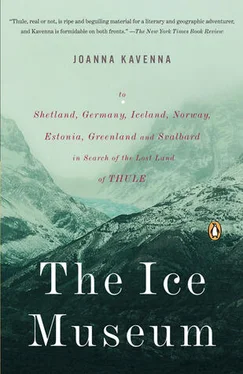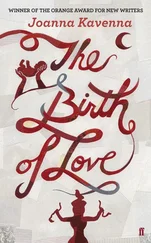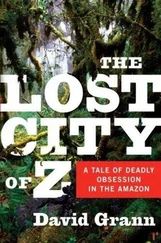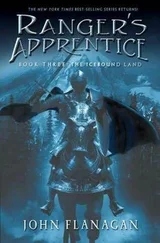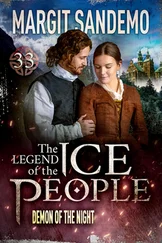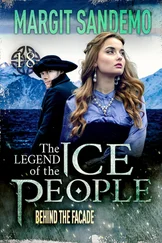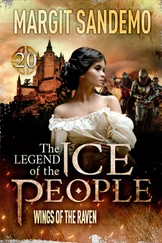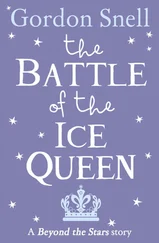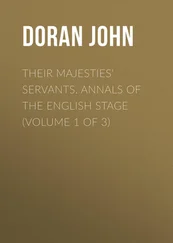Had he lived into the 1930s, Nansen would have been surprised at what happened to his former assistant Vidkun Quisling. Nansen had met Quisling through Russia, where Quisling had worked as a military attaché in St. Petersburg. Nansen employed Quisling throughout the 1920s in famine-relief enterprises and in the attempted repatriation of Armenians from Turkey. When Nansen wrote Russia & Peace during 1923, Quisling helped him. Nansen found Quisling a competent administrator, and recommended him for a series of jobs in Russia, the Balkans, and the Ukraine. Asked once to recommend someone to speak about Russia, Nansen recommended Quisling. After Nansen and Quisling stopped working together, they exchanged letters; Nansen sent Quisling New Year’s greetings shortly before his death. They were hardly friends; Quisling was much younger, much less senior, and Nansen by the end was a regal and fixated man, concerned more with causes than with individuals. Like any other budding opportunist, Quisling struggled to link himself with Nansen; after Nansen’s death, Quisling supplied commentary and reaction in the press, trying to bind himself to Nansen’s reputation. It was a game he was still playing at his trial for treason, after the end of the Second World War, when he claimed Nansen had been like a protector and a father to him. But Nansen had been like a protector and father to Norway, in the popular imagination; it was a feeling many shared.
During the 1930s, after Nansen’s death, Quisling began to work on his ‘philosophical’ ideas. Quisling developed a fantasy about the north: he thought Norway was the homeland of the Nordic race, and believed the nation should play a leading part in the Greater Nordic Peace Union. The Nordic race, he believed, was a force for global civilization, and by working together, Quisling believed, the Nordic or Nordic-friendly countries would create world unity. He wanted the Scandinavian countries and Germany and Britain to form a ‘Nordic League.’ Quisling maintained that materialist creeds would collapse, and be superseded by a return to spiritualism.
I imagined, as the boat moved along the coast, that Nansen would have dismissed Quisling’s world-changing scheme as utopian adolescence. Nansen’s enthusiasms and passions were undercut by a brooding sense of melancholy, bordering on despair. It was a state of sensitive paralysis that had come to him during the Arctic night, even as he marvelled at the beauties of the ice floes. It was a form of humility, a reluctant acceptance of the insignificance of human desires and doctrines in the face of the vast emptiness of the northern regions. A writer of vivid imagination, a myth collator of eclectic tastes, Nansen was also precise and realistic, qualities fashioned by the trial of theory during Arctic travel. When Quisling began to entwine his variety of nationalism with the schemes of the German National Socialists, Nansen would have despised the presumption and barbarism of the Nazis, their belief that world orders could be created through violence and destruction. As he had recoiled from the totalitarian force of the Communist state, Nansen would have been repulsed by the curtailing of individual freedoms inherent to the Nazi order.
Quisling was a minor political figure, in a small country, but he craved political power and philosophical influence. He had a brief stint as a cabinet minister in the early 1930s for the Agrarian Party. His strangeness, his introversion, his extremism combined to make him unpopular. There was a bizarre moment during his time as a minister when he was apparently attacked in his office at knife-point. Instead of sounding the alarm, Quisling sneaked out of the building and went home, and only called the police later. It made everyone uneasy; something was unclear about the story, and it contributed to a sense that Quisling was bizarre and untrustworthy. The gulf between desire and attainment fell like a shadow across Quisling’s career, as he struggled to emerge from insignificance. He founded a group called the Nordic Folk Uprising, based on the ‘fact’ that ‘Norwegians along with other Scandinavian peoples form the core of the large folk family which represents the most valuable racial contribution to humanity, the great Nordic race,’ said Quisling. During the 1930s, Quisling became increasingly concerned with racial ‘purity’ and anti-Semitism. He talked about ‘blood consciousness, ’ marching his men through working-class districts, trying to gain support from the disaffected. Quisling wanted the regeneration of the Nordic race as much as the Nazis—he hoped the Norwegian population would swell to 10 million by the year 2000. He would have been disappointed: Norway’s population in 2000 was less than half this number. In 1933 he founded the National Union, but his party failed to attract popular support. In elections leading up to the war, it was always scrabbling around at 2 or 3 per cent of the overall vote. By slavish imitation of the Nazis, Quisling hoped for a similar coup: he dressed his militia in brown shirts; he insisted on being addressed as the Fører , the leader. He was in contact with the German fascists during the 1930s; he sent off a telegram to Hitler thanking him for all his work for the ‘Germanic and Nordic Brüdervolk .’ He went to visit Hitler and Rosenberg in Berlin in the winter of 1939; he tried to negotiate for the leadership of the new Nazi Norway during 1940.
When Hitler invaded Norway in 1940, Quisling announced that he was the leader of Norway, and ordered the Norwegians not to resist the German forces. While the Norwegian king refused to acknowledge him, Quisling kept addressing the nation on the radio, in the newspapers, announcing himself as the prime minister, telling the Norwegians to collaborate. As a tactic it failed; Quisling was largely disobeyed and once the lack of popular support trickled back to Berlin, Hitler withdrew his support for Quisling’s coup. Quisling was humiliated, and ordered to go to Germany. Around this time the word “quisling” came into use across Europe, meaning a traitor, a man who tried to sell his country to an invading army. ‘A vile race of quislings—to use the new word, which will carry the scorn of mankind down the centuries—is hired to fawn upon the conqueror, to “collaborate” in his designs and to enforce his rule upon their fellow countrymen while grovelling low themselves,’ said Churchill in 1941. George Orwell took it up, describing treacherous quislingisms —meaning devious manoeuvring and lies. In the summer of 1940, the Norwegian king and members of the pre-war government fled to London, where they remained as government-in-exile throughout the war. Quisling wheedled his way back to Norway in the autumn, and took command of the collaborationist government. He spent the war railing against the Jews, the Freemasons, capitalism, Marxism, democracy, Bolshevism, England, the U.S., Churchill, Roosevelt, Wall Street and the London Stock Exchange. All these evils, Quisling kept saying, were attacks on the Germanic peoples.
Quisling thought the British had begun well, as stern Anglo-Saxons, with Beowulf a respectable early Saga, and then they had been receptive to the Viking conquests. But he thought the French had ruined it for the British, invading them, mixing them up with all sorts of un-Germanic elements, softening their language, drawing them away from the true brotherhood of Nordic nations. This was why Britain was being so disappointing about Nazism, Quisling had argued, because of this Romance strain in the national character, which had caused the British to lose their way. There were collaborators throughout Norway: there were the members of the council of commissioners who governed the country under the leadership of the German Reichskommissar, the thousands punished at the end of the war for treason, the dozens who were condemned to death. There were the tens of thousands who joined the Nasjonal Samling, supporters of Quisling’s movement for Nordic supremacy. Several thousand Norwegians fought with the German forces, choosing to enlist in the Nazi cause. Yet there was the other side: the thousands of resistance fighters in Norway, the thousands of Norwegians who died fighting with the Allied forces, who were imprisoned in camps in Norway and Germany during the war years. There were savage reprisals from the Germans against those Norwegians who worked on the clandestine ferry route from western Norway to the Shetland Isles, shipping refugees from the occupied country. Nearly a hundred thousand Norwegians went abroad, half of them to Sweden, where they lived out the war. The king and the Norwegian government worked in London, trying to gather forces together.
Читать дальше
